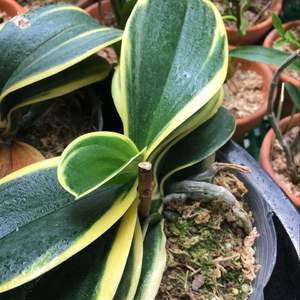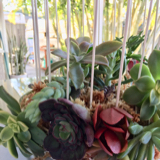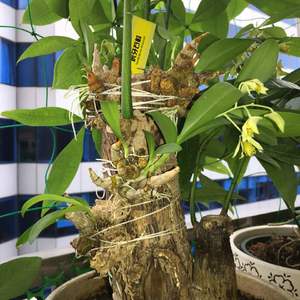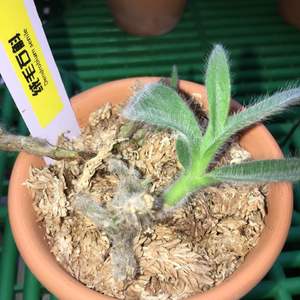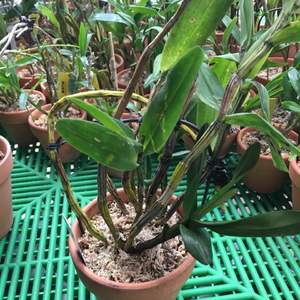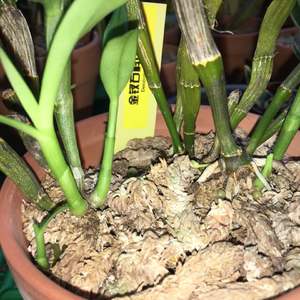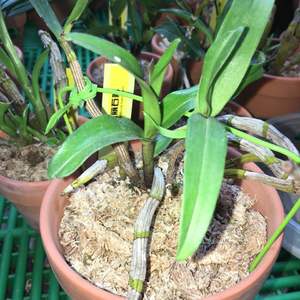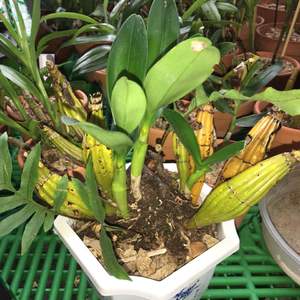文章
Miss Chen
2018年07月10日

Description: This herbaceous plant is a winter or spring annual that forms a low rosette of several basal leaves up to 4 cm. (1½") across. Individual basal leaves are 0.5–2 cm. (¼–¾") long and about one-third to one-half as much across; they are elliptic to broadly elliptic in shape, bluntly dentate toward their tips, and sessile. The leaf surface is medium green to reddish green (rarely red); its upper surface has sparse minute pubescence, while its lower surface is glabrous. Each rosette of basal leaves develops 1–15 flowering stalks that are 2.5 cm. (1") to 7.5 cm. (3") tall. These stalks are light green, reddish green, or red; they are short-pubescent, terete, and either erect or arching upward. The flowering stalks terminate in either solitary flowers or umbels of flowers (usually the latter); there are 2–10 flowers per umbel. Sometimes 1–2 secondary stalks will originate from an umbel of flowers to produce secondary umbels of flowers, making an inflorescence a partially compound umbel of flowers.
The secondary flowering stalks are similar to the primary flowering stalks, except they are usually shorter. The secondary umbels of flowers are similar to the primary umbels of flowers, except they tend to have fewer flowers. The pedicels of the flowers (or seed capsules) are 3–25 mm. (1/8–1") in length and erect to upwardly arching. Compared to the flowering stalks (peduncles), the pedicels are shorter and more slender, although they become longer as the seed capsules develop. Individual flowers are about 2 mm. across and 4 mm. long; each flower has a green calyx with 5 erect teeth, a white tubular corolla with 5 ascending lobes, 5 inserted stamens with short filaments, and a light green ovary with a single short style. The calyx is 5-angular from 5 ridges and it has sparse minute pubescence. The teeth of the calyx extend above the lobes of the corolla. Individual lobes of the corolla are lanceolate in shape. The teeth of the calyx are narrowly deltate to deltate in shape and a little shorter than the angular calyx-tube.

At the base of each umbel (or secondary umbel) of flowers, there are 2 or more leafy bracts that resemble the basal leaves, except they are smaller in size (less than 0.5 cm. or ¼" in length) and they lack teeth; sometimes they form a small rosette. The blooming period occurs from from early to late spring, lasting about 1 month. The flowers are inconspicuous. Afterwards, they are replaced by small seed capsules. These capsules are about 3 mm. long and ovoid in shape; each capsule eventually divides into 5 sections to release several seeds. These seeds are small enough to be blown about by the wind. Mature seeds are about 1 mm. long, 0.75 mm. across, 3-angled, and dark brown to black; the seed surface has a network of minute ridges and pits. The root system consists of a slender taproot. This plant reproduces by reseeding itself. It dies down no later than mid-summer.
Cultivation: The preference is full to partial sun, mesic to dry conditions, and a barren soil containing sand, gravel, clay, or rocky debris. Most growth and development occurs during the spring, which happens very quickly.

Range & Habitat: Western Rock Jasmine (Androsace occidentalis) is a native plant in Illinois, where it occurs occasionally in western and northern Illinois, while in the rest of the state it is uncommon or absent (see Distribution Map). This plant is more common in drier areas to the west of Illinois. In Indiana, Ohio, and Michigan, this plant is rare and state-listed as 'threatened' or 'endangered.' Habitats include gravel hill prairies, upland sand prairies, upland dolomite prairies, gravelly or sandy areas along railroads, roadsides, pastures, fallow fields, and waste ground. In Illinois, Western Rock Jasmine occurs in both higher quality natural areas and disturbed areas on exposed ground soil where it is dry and sunny.
Faunal Associations: This plant becomes more common in pastures that are moderately to heavily grazed by cattle as this reduces competition from taller and more aggressive plants (Patton & Nyren, 2015).

Photographic Location: Found on waste ground along an alley way in Urbana, Illinois. This dumped waste ground contained broken bricks and pieces of concrete.
Comments: This tiny plant has inconspicuous flowers and it is easily overlooked. When the stalks with umbels of flowers are produced, it fairly easy to identify, however. Western Rock Jasmine (Androsace occidentalis) is the only species of its genus that has been found in Illinois. Further to the west, however, there are several Rock Jasmine species (Androsace spp.). These more western species tend to be less weedy in appearance and they have showier flowers. Other common names for Androsace occidentalis are Western Rock Primrose and Western Fairy Candelabra. Sometimes this plant is simply referred to as Rock Jasmine, Rock Primrose, or Fairy Candelabra.
The secondary flowering stalks are similar to the primary flowering stalks, except they are usually shorter. The secondary umbels of flowers are similar to the primary umbels of flowers, except they tend to have fewer flowers. The pedicels of the flowers (or seed capsules) are 3–25 mm. (1/8–1") in length and erect to upwardly arching. Compared to the flowering stalks (peduncles), the pedicels are shorter and more slender, although they become longer as the seed capsules develop. Individual flowers are about 2 mm. across and 4 mm. long; each flower has a green calyx with 5 erect teeth, a white tubular corolla with 5 ascending lobes, 5 inserted stamens with short filaments, and a light green ovary with a single short style. The calyx is 5-angular from 5 ridges and it has sparse minute pubescence. The teeth of the calyx extend above the lobes of the corolla. Individual lobes of the corolla are lanceolate in shape. The teeth of the calyx are narrowly deltate to deltate in shape and a little shorter than the angular calyx-tube.

At the base of each umbel (or secondary umbel) of flowers, there are 2 or more leafy bracts that resemble the basal leaves, except they are smaller in size (less than 0.5 cm. or ¼" in length) and they lack teeth; sometimes they form a small rosette. The blooming period occurs from from early to late spring, lasting about 1 month. The flowers are inconspicuous. Afterwards, they are replaced by small seed capsules. These capsules are about 3 mm. long and ovoid in shape; each capsule eventually divides into 5 sections to release several seeds. These seeds are small enough to be blown about by the wind. Mature seeds are about 1 mm. long, 0.75 mm. across, 3-angled, and dark brown to black; the seed surface has a network of minute ridges and pits. The root system consists of a slender taproot. This plant reproduces by reseeding itself. It dies down no later than mid-summer.
Cultivation: The preference is full to partial sun, mesic to dry conditions, and a barren soil containing sand, gravel, clay, or rocky debris. Most growth and development occurs during the spring, which happens very quickly.

Range & Habitat: Western Rock Jasmine (Androsace occidentalis) is a native plant in Illinois, where it occurs occasionally in western and northern Illinois, while in the rest of the state it is uncommon or absent (see Distribution Map). This plant is more common in drier areas to the west of Illinois. In Indiana, Ohio, and Michigan, this plant is rare and state-listed as 'threatened' or 'endangered.' Habitats include gravel hill prairies, upland sand prairies, upland dolomite prairies, gravelly or sandy areas along railroads, roadsides, pastures, fallow fields, and waste ground. In Illinois, Western Rock Jasmine occurs in both higher quality natural areas and disturbed areas on exposed ground soil where it is dry and sunny.
Faunal Associations: This plant becomes more common in pastures that are moderately to heavily grazed by cattle as this reduces competition from taller and more aggressive plants (Patton & Nyren, 2015).

Photographic Location: Found on waste ground along an alley way in Urbana, Illinois. This dumped waste ground contained broken bricks and pieces of concrete.
Comments: This tiny plant has inconspicuous flowers and it is easily overlooked. When the stalks with umbels of flowers are produced, it fairly easy to identify, however. Western Rock Jasmine (Androsace occidentalis) is the only species of its genus that has been found in Illinois. Further to the west, however, there are several Rock Jasmine species (Androsace spp.). These more western species tend to be less weedy in appearance and they have showier flowers. Other common names for Androsace occidentalis are Western Rock Primrose and Western Fairy Candelabra. Sometimes this plant is simply referred to as Rock Jasmine, Rock Primrose, or Fairy Candelabra.
0
0
文章
Miss Chen
2018年07月09日

Description: This plant is a summer annual about 1-3' tall that is either sparingly branched or unbranched. The central stem is stout, round, light green, and more or less covered with white hairs; it also has fine longitudinal veins that are white. The alternate leaves are up to 6" long and 4" across (excluding the petioles), becoming smaller in the upper half of the central stem. They are cordate-ovate or elliptic and smooth or slightly undulate along the margins. The base of each leaf is rounded or wedge-shaped, while its tip is rounded and blunt. The lower surface of each leaf is usually pubescent, while the upper surface is less pubescent or hairless.
The central stem terminates in a stout panicle of spikes with whitish green flowers. This terminal inflorescence is up to 6" long (rarely longer in large plants). There are also shorter axilllary panicles of flowering spikes or simple spikes that develop from the axils of the middle to upper leaves. The flowering spikes are bristly in appearance from the crowded flowers and pointed bracts. Rough Pigweed is usually monoecious with separate pistillate (female) and staminate (male) flowers on the same plant. The pistillate flowers have 5 pale white sepals, an ovary with 3 styles, and no petals. The staminate flowers have 5 pale white sepals, 5 stamens, and no petals. The sepals are oblong and about 3 mm. in length; their tips are either short and pointed or flattened. At the base of each flower, there are one or more green bracts about 3-6 mm. long. These bracts have long pointed tips. The blooming period occurs from late summer to early fall and lasts about 1-2 months. Cross-pollination of the flowers is by wind. Each pistillate flower develops a single seed in a membranous bladder (utricle). This utricle splits up to release the seed. Each small seed is dark brown or black, flattened, and circular; it has a smooth and shiny surface. The root system consists of a short stout taproot that is usually tinted red. This plant spreads by reseeding itself.

Cultivation: This plant is typically found in full sun, mesic to dry conditions, and a soil containing loam, clay-loam, or gravelly material. Its size can vary significantly according to moisture levels and the fertility of the soil. The seeds can remain viable in the soil for 30 years or more.
Range & Habitat: The non-native Rough Pigweed is a common plant that occurs in most counties of Illinois (see Distribution Map). It is originally from South America. Habitats include degraded upland prairies, cropland, fallow fields, farm lots, gardens, gravelly areas along roads and railroads, sunny areas along the foundations of buildings, and waste areas. Highly disturbed areas are preferred.

Faunal Associations: Insects rarely visit the wind-pollinated flowers. The caterpillars of the skipper Pholisora catullus (Common Sootywing) feed on the foliage, as do the caterpillars of several moths, including Holomelina aurantiaca (Orange Holomelina), Hymenia perspectalis (Spotted Beet Webworm Moth), Spilosoma congrua (Agreeable Tiger Moth), and Spoladea recurvalis (Hawaiian Beet Webworm Moth). Sometimes Disonycha spp. (Flea Beetles) chew little holes in the leaves. The seeds of pigweeds are very popular with granivorus birds as a source of food during the fall and winter (see Bird Table). Pigs and cattle eat pigweeds readily, although the foliage can cause bloating and other symptoms of nitrate poisoning if an excessive amount of the foliage is eatened. Deer and rabbits eat pigweeds to a limited extent.
Photographic Location: Along the pebbly foundation of the webmaster's apartment building in Urbana, Illinois.

Comments: Rough Pigweed is another weedy member of the Amaranth family, although its seeds are an important source of food to birds. It is quite similar in appearance to another common weed, Amaranthus hybridus (Slender Amaranth), and prefers similar habitats (perhaps those that are slightly drier). Rough Pigweed tends to be shorter and stouter in its growth habit than Slender Pigweed. The flowering spikes of Rough Pigweed are usually more stout and bristly than those of Slender Pigweed; the flowering spikes of Rough Pigweed are whitish green while in bloom, while the flowering spikes of Slender Pigweed are more green (because its sepals are less conspicuous). Using a 10x hand lense, it is possible to observe that the sepals of Rough Pigweed often have flattened tips, while the sepals of Slender Pigweed are more pointed at their tips. Furthermore, the floral bracts of Rough Pigweed are up to 6 mm. in length, while those of Slender Pigweed are up to 4 mm. in length. Red forms of Rough Pigweed apparently don't occur; reddish pigweeds are usually Slender Pigweed, or less often a cultivated Amaranth that has escaped from gardens.
The central stem terminates in a stout panicle of spikes with whitish green flowers. This terminal inflorescence is up to 6" long (rarely longer in large plants). There are also shorter axilllary panicles of flowering spikes or simple spikes that develop from the axils of the middle to upper leaves. The flowering spikes are bristly in appearance from the crowded flowers and pointed bracts. Rough Pigweed is usually monoecious with separate pistillate (female) and staminate (male) flowers on the same plant. The pistillate flowers have 5 pale white sepals, an ovary with 3 styles, and no petals. The staminate flowers have 5 pale white sepals, 5 stamens, and no petals. The sepals are oblong and about 3 mm. in length; their tips are either short and pointed or flattened. At the base of each flower, there are one or more green bracts about 3-6 mm. long. These bracts have long pointed tips. The blooming period occurs from late summer to early fall and lasts about 1-2 months. Cross-pollination of the flowers is by wind. Each pistillate flower develops a single seed in a membranous bladder (utricle). This utricle splits up to release the seed. Each small seed is dark brown or black, flattened, and circular; it has a smooth and shiny surface. The root system consists of a short stout taproot that is usually tinted red. This plant spreads by reseeding itself.

Cultivation: This plant is typically found in full sun, mesic to dry conditions, and a soil containing loam, clay-loam, or gravelly material. Its size can vary significantly according to moisture levels and the fertility of the soil. The seeds can remain viable in the soil for 30 years or more.
Range & Habitat: The non-native Rough Pigweed is a common plant that occurs in most counties of Illinois (see Distribution Map). It is originally from South America. Habitats include degraded upland prairies, cropland, fallow fields, farm lots, gardens, gravelly areas along roads and railroads, sunny areas along the foundations of buildings, and waste areas. Highly disturbed areas are preferred.

Faunal Associations: Insects rarely visit the wind-pollinated flowers. The caterpillars of the skipper Pholisora catullus (Common Sootywing) feed on the foliage, as do the caterpillars of several moths, including Holomelina aurantiaca (Orange Holomelina), Hymenia perspectalis (Spotted Beet Webworm Moth), Spilosoma congrua (Agreeable Tiger Moth), and Spoladea recurvalis (Hawaiian Beet Webworm Moth). Sometimes Disonycha spp. (Flea Beetles) chew little holes in the leaves. The seeds of pigweeds are very popular with granivorus birds as a source of food during the fall and winter (see Bird Table). Pigs and cattle eat pigweeds readily, although the foliage can cause bloating and other symptoms of nitrate poisoning if an excessive amount of the foliage is eatened. Deer and rabbits eat pigweeds to a limited extent.
Photographic Location: Along the pebbly foundation of the webmaster's apartment building in Urbana, Illinois.

Comments: Rough Pigweed is another weedy member of the Amaranth family, although its seeds are an important source of food to birds. It is quite similar in appearance to another common weed, Amaranthus hybridus (Slender Amaranth), and prefers similar habitats (perhaps those that are slightly drier). Rough Pigweed tends to be shorter and stouter in its growth habit than Slender Pigweed. The flowering spikes of Rough Pigweed are usually more stout and bristly than those of Slender Pigweed; the flowering spikes of Rough Pigweed are whitish green while in bloom, while the flowering spikes of Slender Pigweed are more green (because its sepals are less conspicuous). Using a 10x hand lense, it is possible to observe that the sepals of Rough Pigweed often have flattened tips, while the sepals of Slender Pigweed are more pointed at their tips. Furthermore, the floral bracts of Rough Pigweed are up to 6 mm. in length, while those of Slender Pigweed are up to 4 mm. in length. Red forms of Rough Pigweed apparently don't occur; reddish pigweeds are usually Slender Pigweed, or less often a cultivated Amaranth that has escaped from gardens.
0
0
文章
Miss Chen
2018年07月09日

Description: This plant is a biennial. During the 1st year it consists of a small rosette of leaves, while during the 2nd year it becomes a little-branched plant about 1-3' tall. The leaves of 1st year plants are up to 2" long and across. They are cordate-orbicular with margins that are dentate or wavy and their upper surface has a reticulated network of veins. The petioles of these basal leaves are rather long and slender. The alternate leaves of 2nd year plants have a similar appearance, except that they are usually longer than wide, spanning up to 3" long and 2" across. The lower and middle leaves along the stems are usually cordate with either acute or blunt tips, while the upper leaves are often ovate. Both the stems and petioles of 2nd year plants are occasionally hairy, otherwise they are glabrous like the blades of the leaves. The foliage is often light green or yellowish green in appearance, otherwise it is medium green. The upper stems terminate in narrow racemes of white flowers. While in bloom, these flowers are bunched together toward the top of the raceme. However, as the flowers mature and develop seedpods, the raceme becomes more elongated and they become more separated.
Each flower is about ¼" across, consisting of 4 white petals, 4 light green sepals, a short cylindrical style, and several stamens with pale yellow anthers. The pedicels of flowers while they are in bloom are up to ¼" in length, although they become longer later. The blooming period occurs during late spring or early summer, lasting about 1-2 months. The flowers are replaced by narrow seedpods that are called "siliques." These seedpods are about 1½–2" long and narrowly cylindrical (although slightly 4-angled in circumference). Relative to erect stalk of the raceme, they are more or less ascending. As the seedpods become mature, the foliage dies down by the end of summer. Each mature seedpod contains a single row of black oblongoid seeds. The root system consists of a shallow taproot that is white and branches frequently. This plant often forms colonies by reseeding itself.
Cultivation: The preference is partial sun to medium shade, moist to mesic conditions, and a loamy fertile soil. Small rosettes of leaves are formed during the summer of the 1st year, which die down to the ground during the winter. However, during the spring of the following year, new leaves appear on stems that develop rapidly to produce flowers by early summer. This plant is well-adapted to deciduous woodlands and can reseed itself aggressively, forming dense stands that exclude other species. It has few problems with pests and disease organisms.

Range & Habitat: The non-native Garlic Mustard has been reported primarily in NE and central Illinois, where it is locally common. In other areas of the state, this plant is apparently less common or absent, however it is rapidly spreading (see Distribution Map). There is little doubt that it is more common than official records indicate. This plant was introduced into the United States from Eurasia. Habitats include moist to slightly dry deciduous woodlands, woodland borders, areas along woodland paths, semi-shaded areas in gardens and along fence rows, and partially shaded waste areas. This plant thrives in light shade or partial sun and it is intolerant of regular mowing. At the present time, Garlic Mustard is the worst herbaceous invader of deciduous woodlands in Illinois as it has the capacity to crowd out and destroy all of the native wildflowers that bloom during the spring. Effective measures of control include pulling the plants by their roots and spraying the foliage with herbicides. Cutting the flowering stalks from their stems is not an adequate method of control because Garlic Mustard is capable of regenerating new flowering stalks from lateral stems. Also, mature seeds can develop from any cut stalks of flowers and immature seedpods that are left on the ground.

Faunal Associations: The flowers attract various kinds small bees and flower flies. In sunnier areas, they may also attract an introduced butterfly, Pieris rapae (Cabbage White). There appears to be very few native insects that feed on the foliage and other parts of Garlic Mustard. Two flea beetles, Phyllotreta cruciferae and Phyllotreta punctulata, have been reported by Clark et al. (2004) to feed on this plant. These flea beetles also feed on other species in the Mustard family. At the present time, ecologists are examining insect pests of Garlic Mustard in Europe to determine if any of them are suitable for introduction in North America. So far, two species of leaf beetles appear to be the best candidates for biological control. Apparently the seeds are little-used by birds and mammalian herbivores rarely bother the foliage, possibly because they're repelled by its garlic-like scent. Considering how rapidly this plant has spread, it is thought that its seeds cling to the muddy feet of White-tailed Deer and the shoes of humans. This would explain its common occurrence along woodland paths.

Photographic Location: The edge of a deciduous woodland at Judge Webber Park in Urbana, Illinois.
Comments: Garlic Mustard was introduced into the United States as a potherb. The young leaves are edible to humans and quite nutritious – they can be added to salads or boiled in water and seasoned like spinach. The garlic-like aroma of the foliage is quite pronounced, which sets this species apart from many other members of the Mustard family (as well as plants from other families). Some Cardamine spp. (Bitter Cress species) are somewhat similar in appearance to Garlic Mustard, but their foliage lacks a garlic scent and their leaves are usually lobed. Some members of the Mint family have leaves that resemble those of Garlic Mustard, but they differ by having opposite leaves and 4-angled stems; they also lack the elongated seedpods that are typical of both Garlic Mustard and species of Bitter Cress.
Each flower is about ¼" across, consisting of 4 white petals, 4 light green sepals, a short cylindrical style, and several stamens with pale yellow anthers. The pedicels of flowers while they are in bloom are up to ¼" in length, although they become longer later. The blooming period occurs during late spring or early summer, lasting about 1-2 months. The flowers are replaced by narrow seedpods that are called "siliques." These seedpods are about 1½–2" long and narrowly cylindrical (although slightly 4-angled in circumference). Relative to erect stalk of the raceme, they are more or less ascending. As the seedpods become mature, the foliage dies down by the end of summer. Each mature seedpod contains a single row of black oblongoid seeds. The root system consists of a shallow taproot that is white and branches frequently. This plant often forms colonies by reseeding itself.
Cultivation: The preference is partial sun to medium shade, moist to mesic conditions, and a loamy fertile soil. Small rosettes of leaves are formed during the summer of the 1st year, which die down to the ground during the winter. However, during the spring of the following year, new leaves appear on stems that develop rapidly to produce flowers by early summer. This plant is well-adapted to deciduous woodlands and can reseed itself aggressively, forming dense stands that exclude other species. It has few problems with pests and disease organisms.

Range & Habitat: The non-native Garlic Mustard has been reported primarily in NE and central Illinois, where it is locally common. In other areas of the state, this plant is apparently less common or absent, however it is rapidly spreading (see Distribution Map). There is little doubt that it is more common than official records indicate. This plant was introduced into the United States from Eurasia. Habitats include moist to slightly dry deciduous woodlands, woodland borders, areas along woodland paths, semi-shaded areas in gardens and along fence rows, and partially shaded waste areas. This plant thrives in light shade or partial sun and it is intolerant of regular mowing. At the present time, Garlic Mustard is the worst herbaceous invader of deciduous woodlands in Illinois as it has the capacity to crowd out and destroy all of the native wildflowers that bloom during the spring. Effective measures of control include pulling the plants by their roots and spraying the foliage with herbicides. Cutting the flowering stalks from their stems is not an adequate method of control because Garlic Mustard is capable of regenerating new flowering stalks from lateral stems. Also, mature seeds can develop from any cut stalks of flowers and immature seedpods that are left on the ground.

Faunal Associations: The flowers attract various kinds small bees and flower flies. In sunnier areas, they may also attract an introduced butterfly, Pieris rapae (Cabbage White). There appears to be very few native insects that feed on the foliage and other parts of Garlic Mustard. Two flea beetles, Phyllotreta cruciferae and Phyllotreta punctulata, have been reported by Clark et al. (2004) to feed on this plant. These flea beetles also feed on other species in the Mustard family. At the present time, ecologists are examining insect pests of Garlic Mustard in Europe to determine if any of them are suitable for introduction in North America. So far, two species of leaf beetles appear to be the best candidates for biological control. Apparently the seeds are little-used by birds and mammalian herbivores rarely bother the foliage, possibly because they're repelled by its garlic-like scent. Considering how rapidly this plant has spread, it is thought that its seeds cling to the muddy feet of White-tailed Deer and the shoes of humans. This would explain its common occurrence along woodland paths.

Photographic Location: The edge of a deciduous woodland at Judge Webber Park in Urbana, Illinois.
Comments: Garlic Mustard was introduced into the United States as a potherb. The young leaves are edible to humans and quite nutritious – they can be added to salads or boiled in water and seasoned like spinach. The garlic-like aroma of the foliage is quite pronounced, which sets this species apart from many other members of the Mustard family (as well as plants from other families). Some Cardamine spp. (Bitter Cress species) are somewhat similar in appearance to Garlic Mustard, but their foliage lacks a garlic scent and their leaves are usually lobed. Some members of the Mint family have leaves that resemble those of Garlic Mustard, but they differ by having opposite leaves and 4-angled stems; they also lack the elongated seedpods that are typical of both Garlic Mustard and species of Bitter Cress.
0
0
文章
Miss Chen
2018年07月08日

Description: This herbaceous perennial plant is 4-12" tall and unbranched, consisting of a rosette of leaves and a flowering stalk. The basal leaves are up to 3" long and 1" across. They are evergreen or semi-evergreen, obovate (spoon-shaped), and nearly hairless. Their margins are crenate and slightly undulate. The flowering stalk is 4-angled and slightly pubescent or hairy. The opposite leaves along this stalk are similar to the basal leaves, except that they are smaller in size and ovate. The flowers occur in a whorled spike along the upper half of the leafy stalk. They are produced in abundance and densely distributed along this spike. Each tubular flower is about 1/2–2/3" (12-17 mm.) in length, consisting of a 2-lipped corolla and a green calyx with 5 teeth. The corolla is usually various shades of blue-violet, and less often pink or white. There are dark blue-violet lines that lead toward the throat of the corolla; they function as nectar guides. The upper lip of the corolla is truncated and very small, while the large lower lip has 3 rounded lobes. The middle lobe of the lower lip is notched at its tip and the largest in size. The outer surface of the corolla behind the lobes is conspicuously hairy; this causes the flower buds to appear hairy.
The blooming period occurs during the spring and lasts about 2-3 weeks. Each flower is replaced by 4 nutlets that are oval-shaped and pitted across the surface. The root system consists of a crown of fibrous roots. Green stolons up to 12" long are produced from the rosette of basal leaves. They are largely naked, except for a few small leaves that are narrowly ovate. These stolons often form new plantlets by rooting at their tips. Carpet Bugle can reproduce by seeds or vegetatively by means of these stolons; it often forms colonies.
Cultivation: The preference is partial sun, slightly moist to mesic conditions, and a fertile loamy soil that is somewhat acidic. If the soil is poorly drained and soggy, crown rot can develop and spread rapidly. In sandy soil, the roots are occasionally attacked by nematodes.

Range & Habitat: The non-native Carpet Bugle can escape from cultivation in gardens, but it is still uncommon in the wild, occurring in NE Illinois and Jackson County in southern Illinois (see Distribution Map). Habitats include partially shaded areas of lawns, edges of yards, partially shaded areas along foundations of buildings, nursery plots, and edges of woodlands. This plant is occasionally used as a ground cover because of its evergreen leaves and low spreading habit, but it is potentially invasive of natural areas. In Eurasia, where it is native, this plant occurs in partially shaded areas of deciduous woodlands, thickets, or meadows; the flowers bloom before the leaves of the trees have become fully developed.
Faunal Associations: The flowers are pollinated by bumblebees and other long-tongued bees. According to sources within the horticulture industry, the foliage is rarely bothered by rabbits and deer.

Photographic Location: The photographs were taken underneath a tree at Dave Monk's postage stamp prairie in Champaign, Illinois, and along the side of a house in NW Ohio.
Comments: Different cultivars of Carpet Bugle are available through the horticultural industry that can vary considerably in the color of their flowers and foliage. The only other Ajuga sp. that has naturalized in Illinois is Ajuga genevensis (Geneva Bugle). This species is slightly taller with stems and leaves that are more hairy than Carpet Bugle; it also doesn't produce stolons. Carpet Bugle is easy to distinguish from other members of the Mint family because of the following combination of features: 1) Its blue-violet flowers are ½" in length or slightly larger, 2) the upper lip of the corolla is truncated and quite short, 3) the flowers occur in a terminal whorled spike, 4) the flowers bloom during the spring on stalks that are 1' tall or less, and 5) above ground stolons are produced in abundance from the rosette of basal leaves. This latter characteristic is especially useful in identifying this species because very few members of the Mint family produce above-ground stolons.
The blooming period occurs during the spring and lasts about 2-3 weeks. Each flower is replaced by 4 nutlets that are oval-shaped and pitted across the surface. The root system consists of a crown of fibrous roots. Green stolons up to 12" long are produced from the rosette of basal leaves. They are largely naked, except for a few small leaves that are narrowly ovate. These stolons often form new plantlets by rooting at their tips. Carpet Bugle can reproduce by seeds or vegetatively by means of these stolons; it often forms colonies.
Cultivation: The preference is partial sun, slightly moist to mesic conditions, and a fertile loamy soil that is somewhat acidic. If the soil is poorly drained and soggy, crown rot can develop and spread rapidly. In sandy soil, the roots are occasionally attacked by nematodes.

Range & Habitat: The non-native Carpet Bugle can escape from cultivation in gardens, but it is still uncommon in the wild, occurring in NE Illinois and Jackson County in southern Illinois (see Distribution Map). Habitats include partially shaded areas of lawns, edges of yards, partially shaded areas along foundations of buildings, nursery plots, and edges of woodlands. This plant is occasionally used as a ground cover because of its evergreen leaves and low spreading habit, but it is potentially invasive of natural areas. In Eurasia, where it is native, this plant occurs in partially shaded areas of deciduous woodlands, thickets, or meadows; the flowers bloom before the leaves of the trees have become fully developed.
Faunal Associations: The flowers are pollinated by bumblebees and other long-tongued bees. According to sources within the horticulture industry, the foliage is rarely bothered by rabbits and deer.

Photographic Location: The photographs were taken underneath a tree at Dave Monk's postage stamp prairie in Champaign, Illinois, and along the side of a house in NW Ohio.
Comments: Different cultivars of Carpet Bugle are available through the horticultural industry that can vary considerably in the color of their flowers and foliage. The only other Ajuga sp. that has naturalized in Illinois is Ajuga genevensis (Geneva Bugle). This species is slightly taller with stems and leaves that are more hairy than Carpet Bugle; it also doesn't produce stolons. Carpet Bugle is easy to distinguish from other members of the Mint family because of the following combination of features: 1) Its blue-violet flowers are ½" in length or slightly larger, 2) the upper lip of the corolla is truncated and quite short, 3) the flowers occur in a terminal whorled spike, 4) the flowers bloom during the spring on stalks that are 1' tall or less, and 5) above ground stolons are produced in abundance from the rosette of basal leaves. This latter characteristic is especially useful in identifying this species because very few members of the Mint family produce above-ground stolons.
0
0
文章
Miss Chen
2018年07月08日

Description: This herbaceous perennial plant is 1-2½' tall, consisting of basal leaves and flowering stalks with alternate leaves. The stalks are light green and glabrous. The basal and lower leaves are bipinnate with 6-9 leaflets, while the upper leaves are pinnate with 3 leaflets. When the leaves are bipinnate, they are ternately divided into 3 groups of leaflets (2 lateral groups & a terminal group); each group has 2-3 leaflets. The leaflets of basal and lower leaves are 2-3" long and 1¼-2" across; they are medium to dark green, more or less ovate in shape, serrate or doubly serrate along their margins, and hairless or nearly so. Some leaflets may be deeply cleft into two lobes. The leaflets of upper leaves are smaller in size and more narrow in shape (lanceolate or oblong-lanceolate), otherwise they are similar to the leaflets of the preceding leaves. The petioles of basal and lower leaves are 4-12" long, while the petioles of upper leaves are less than 4" long. These petioles are light green and hairless; the petioles of alternate leaves are sheathed at their bases. The petiolule (basal stalklet) of the terminal group of leaflets is 2-3" long, while the petiolules of the lateral groups of leaflets are about 1" long. In each group of leaflets, the lateral leaflets are sessile or nearly so, while the terminal leaflet has a secondary basal stalklet that is nearly sessile to 1" long.
The stalks terminate in compound umbels of flowers about 1½-3½" across that are flat-topped. Each compound umbel is divided into 10-20 umbellets, while each umbellet is divided into 10-25 flowers. The compound umbels lack floral bracts and the umbellets lack floral bractlets. Individual flowers are about 1/8" (3 mm.) across, consisting of 5 white petals with incurved tips and an inferior ovary with a pair of styles. The peduncles of the compound umbels are 3-6" long, light green, glabrous, angular, and grooved. The pedicels of individual flowers are about ¼" in length, light green, and glabrous. The blooming period occurs from late spring to mid-summer, lasting about 1 month. The flowers are replaced by ovoid-oblongoid fruits that are ridged and somewhat flattened; they are about 1/8" (3 mm.) long and release their seeds at maturity during the autumn. The root system is fibrous and rhizomatous. Goutweed often forms clonal colonies from the spreading rhizomes.

Cultivation: The preference is partial sun to light shade, moist to mesic conditions, and soil containing loam, clay-loam, or sandy loam. This plant has few problems with either insects or disease organisms. It can spread aggressively, particularly in locales with cool moist climates.

Range & Habitat: So far, Goutweed has rarely escaped from cultivation and become naturalized in Illinois. It has been found as an escaped plant in only a few counties of NE Illinois (see Distribution Map). Because of its aggressive nature, Goutweed may become more common in the future. It was introduced into North America from Eurasia as an ornamental plant. Habitats include deciduous woodlands (sandy & non-sandy), shaded ravines, woodland borders, cemeteries, roadsides, and waste areas. Cultivated forms of Goutweed include those with variegated and non-variegated leaves. However, wild specimens of Goutweed almost always have non-variegated leaves.
Faunal Associations: Floral-faunal relationships for this plant in North America are poorly understood. Müller (1873/1883) observed miscellaneous flies, beetles, wasps, small bees, and sawflies visiting the flowers for either nectar or pollen in Germany. Apparently the young foliage of Goutweed is considered edible to humans as it has been used in the Old World as a source of food and a medicinal herb.

Photographic Location: A flower garden in Urbana, Illinois.
Comments: Like many other species in the Carrot family, Goutweed has compound umbels of small white flowers and compound leaves. It can be identified by the absence of floral bracts and bractlets underneath its flowers, and by the structure and shape of its leaves. Generally, its compound leaves have ternately arranged leaflets (divided into groups of 3), although the leaflets within a group sometimes occur in pairs. Compared with many other species in the Carrot family, these leaflets are relatively large in size and relatively broad in shape when one considers the size of the plant. Among native wildflowers, Honewort (Cryptotaenia canadensis) is similar in appearance to Goutweed, but the flowers of Honewort are even smaller in size and its compound leaves have only 3 leaflets, rather than 3 groups of leaflets.
The stalks terminate in compound umbels of flowers about 1½-3½" across that are flat-topped. Each compound umbel is divided into 10-20 umbellets, while each umbellet is divided into 10-25 flowers. The compound umbels lack floral bracts and the umbellets lack floral bractlets. Individual flowers are about 1/8" (3 mm.) across, consisting of 5 white petals with incurved tips and an inferior ovary with a pair of styles. The peduncles of the compound umbels are 3-6" long, light green, glabrous, angular, and grooved. The pedicels of individual flowers are about ¼" in length, light green, and glabrous. The blooming period occurs from late spring to mid-summer, lasting about 1 month. The flowers are replaced by ovoid-oblongoid fruits that are ridged and somewhat flattened; they are about 1/8" (3 mm.) long and release their seeds at maturity during the autumn. The root system is fibrous and rhizomatous. Goutweed often forms clonal colonies from the spreading rhizomes.

Cultivation: The preference is partial sun to light shade, moist to mesic conditions, and soil containing loam, clay-loam, or sandy loam. This plant has few problems with either insects or disease organisms. It can spread aggressively, particularly in locales with cool moist climates.

Range & Habitat: So far, Goutweed has rarely escaped from cultivation and become naturalized in Illinois. It has been found as an escaped plant in only a few counties of NE Illinois (see Distribution Map). Because of its aggressive nature, Goutweed may become more common in the future. It was introduced into North America from Eurasia as an ornamental plant. Habitats include deciduous woodlands (sandy & non-sandy), shaded ravines, woodland borders, cemeteries, roadsides, and waste areas. Cultivated forms of Goutweed include those with variegated and non-variegated leaves. However, wild specimens of Goutweed almost always have non-variegated leaves.
Faunal Associations: Floral-faunal relationships for this plant in North America are poorly understood. Müller (1873/1883) observed miscellaneous flies, beetles, wasps, small bees, and sawflies visiting the flowers for either nectar or pollen in Germany. Apparently the young foliage of Goutweed is considered edible to humans as it has been used in the Old World as a source of food and a medicinal herb.

Photographic Location: A flower garden in Urbana, Illinois.
Comments: Like many other species in the Carrot family, Goutweed has compound umbels of small white flowers and compound leaves. It can be identified by the absence of floral bracts and bractlets underneath its flowers, and by the structure and shape of its leaves. Generally, its compound leaves have ternately arranged leaflets (divided into groups of 3), although the leaflets within a group sometimes occur in pairs. Compared with many other species in the Carrot family, these leaflets are relatively large in size and relatively broad in shape when one considers the size of the plant. Among native wildflowers, Honewort (Cryptotaenia canadensis) is similar in appearance to Goutweed, but the flowers of Honewort are even smaller in size and its compound leaves have only 3 leaflets, rather than 3 groups of leaflets.
0
0



